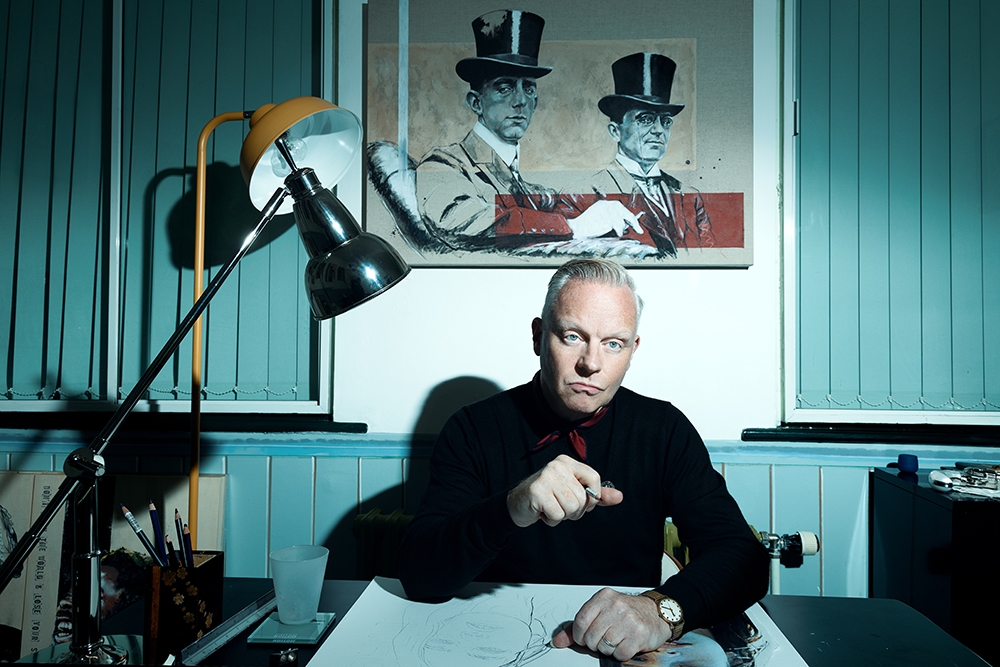Discover TrooRa Marketplace, Shop New Products Open NOW!

Art
The Power of The Brush
Written by: Cristina Deptula

Man contemplating portrait
The Transformative Journey of Dameon Priestly:
Mastering the Art of Social Narrative
Dameon Priestly isn’t just another artist. Rather, he is a storyteller who defies the constraints of time. Through the strokes of his brush, he weaves tales that connect history to the present, the visible to the invisible, and the art to the viewer. To look at a painting by Priestly is to look at our world through a different lens—a lens that challenges us, confronts us, and begs us to question the status quo.
Born in the uneasy climate of Belfast in the 1970s, Priestly has come a long way, both geographically and artistically.
Dameon Priestly came of age during one of Northern Ireland’s most tumultuous periods of conflict between Catholic and Protestant political interests, known as “The Troubles.” The impression left by the social unrest during his formative years was inevitable.
“Even though I haven’t lived in Belfast since 1998, growing up there during those turbulent times shaped me for sure,” he confides.
He knew he was meant to be an artist ever since he was very young, and even as chaos unfolded around him, his connection to art provided a constant sense of purpose and escape.

Dameon Priestly painting desk

Dameon Priestly brick wall
Never Miss a chance to be Inspired!
Start your trial today.
Don’t Just Scroll, Evolve! Explore the Unexplored with TrooRa.
Subscribe for Insights and Stories Not Found Anywhere Else!

Already Have an Account? Sign In
Want The Print?
Get Waitlisted NOW!






